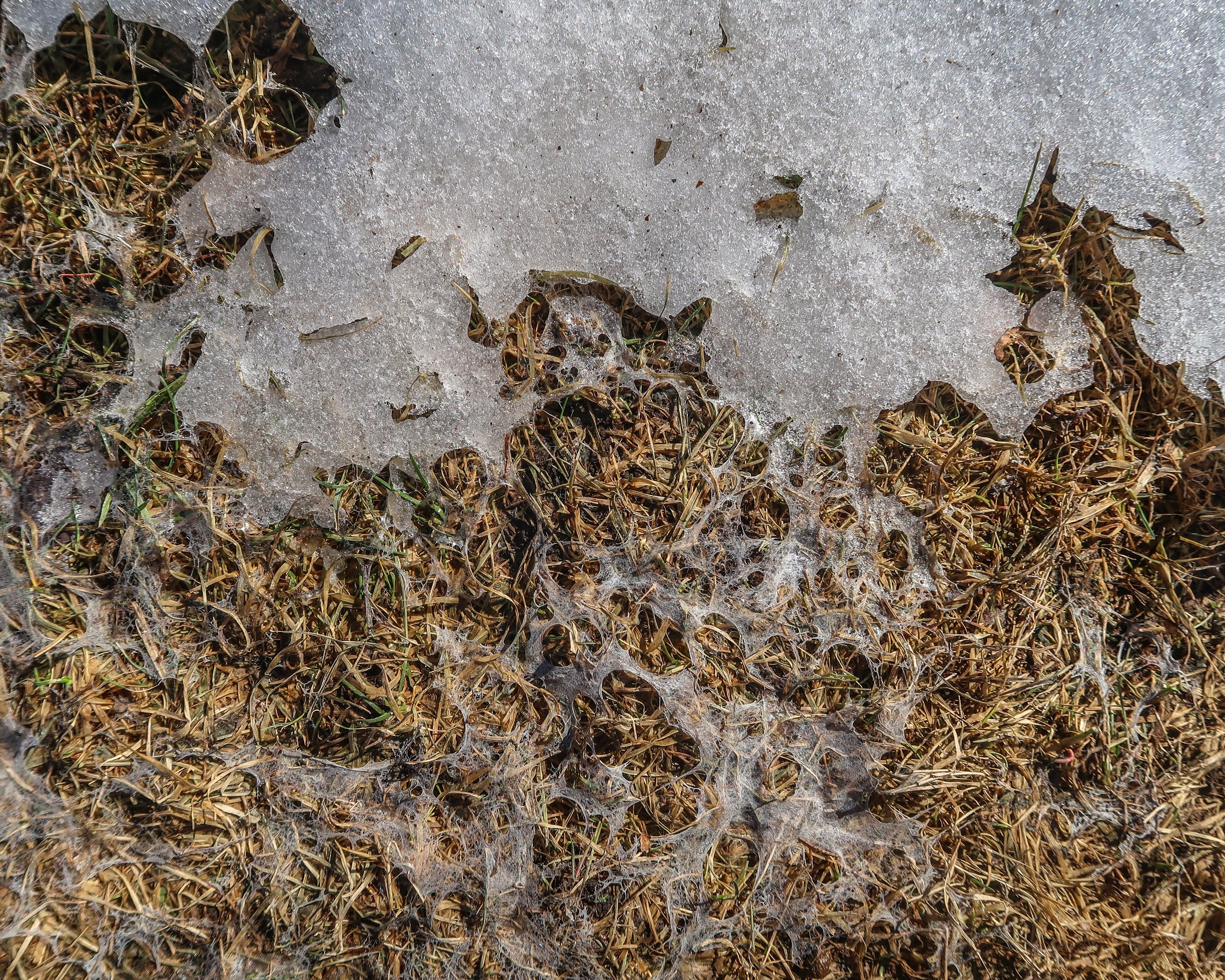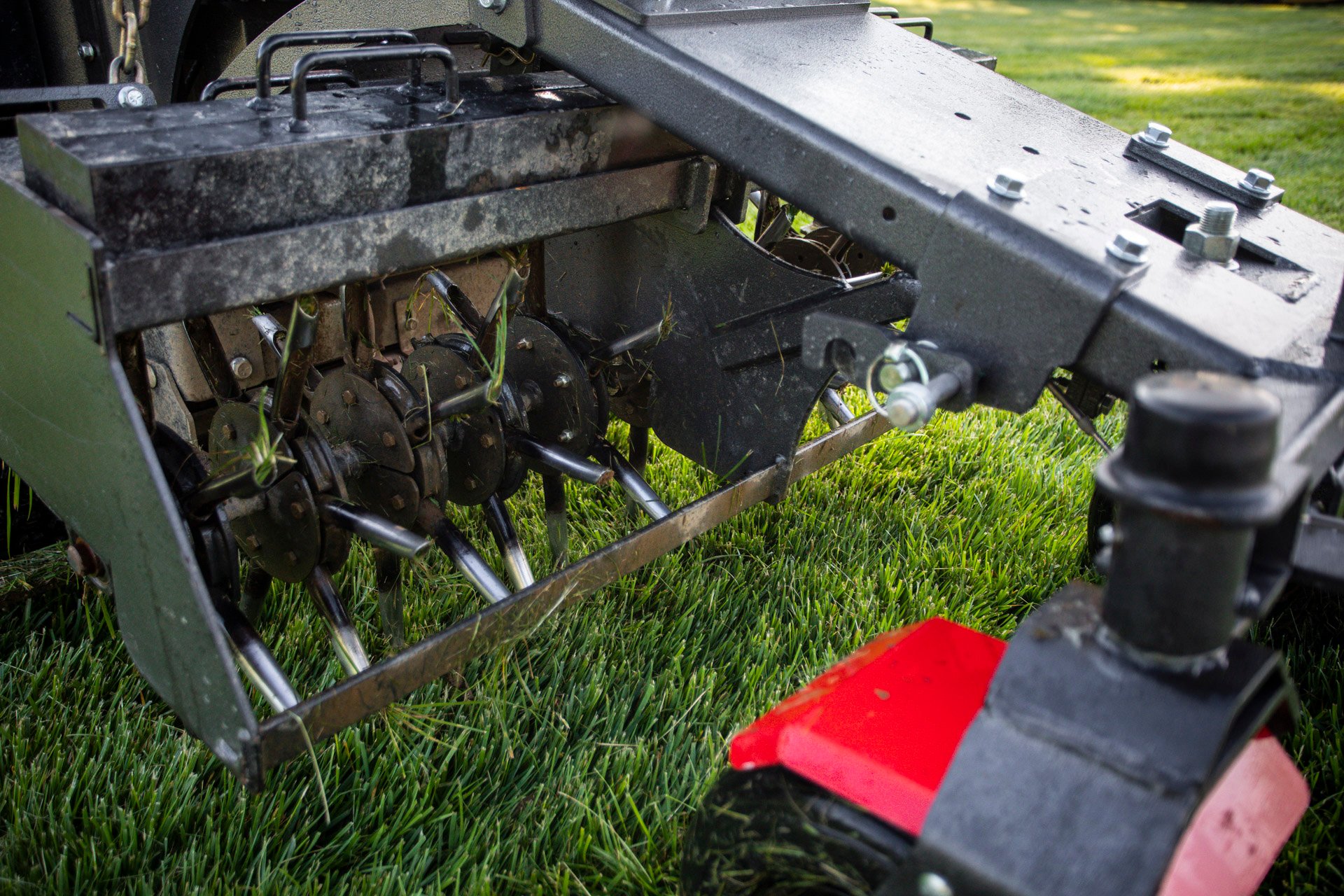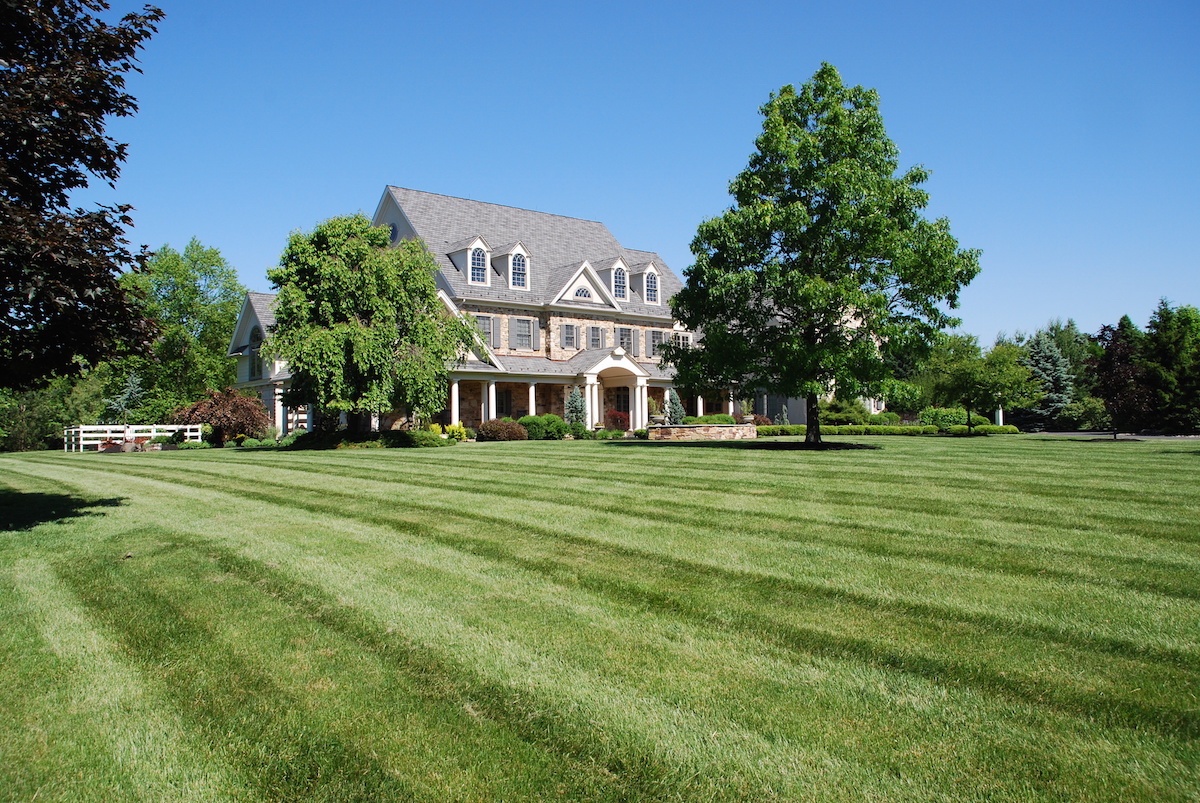Winter can mean harsh conditions like freezing temperatures, high winds, snow, and ice. This can make it unbearable to spend too much time outside.
While you can go inside and warm up, your lawn is stuck outside to deal with it. As a result, there are a number of cold weather lawn problems that you could be facing…some more serious than others.
In this article, we’ll dive into some of the common winter lawn problems, including winter lawn disease. While lawn problems can always feel a bit overwhelming, the good news is that with a professional on your side, you won’t be on your own to solve them.
Common Winter Lawn Problems
In this article, we will cover the following winter lawn concerns as well as how to deal with them.
- Winter lawn disease
- Winter pest damage
- Plow and salt damage
- Crown hydration and winter desiccation
Any four of these issues can cause headaches come spring. But we’ll talk about how to deal with these problems as well as how to prevent them going forward.
1. Winter Lawn Disease
A common winter lawn disease that needs to be on your radar is snow mold.
Snow mold is a fungus that grows beneath the snow. Because of that, it’s not something that you are going to notice until the early spring when the snow clears.

As the snow melts, if you notice patches of pink, gray, or white growth on your lawn, then you’re likely dealing with snow mold. Pink snow mold tends to be the most damaging type and can cause areas of the grass to die. But in the vast majority of cases, lawns bounce back just fine from snow mold.
If one of our clients finds this winter lawn disease once the snow has cleared, we generally advise that they gently rake the area to loosen up matted-down grass and allow the soil to dry out. In most cases, the problem will be resolved on its own.
However, if the grass is severely damaged and dies (and you now have bare patches), the best course of action is aeration and overseeding in the fall to fill those areas in.
Going forward, you’ll want to take steps to prevent snow mold. This starts with good fall lawn care. For instance, we recommend mowing the lawn shorter during the final mow. You still don’t want to scalp the grass, but you want to avoid leaving it too long. Long grass can get matted down and will be more inclined to grow mold.
You’ll also want to pick up any fallen leaves before the first snowfall. Leaving debris on the grass can create an incubation zone for snow mold to grow in the first place.
Aeration also plays a valuable role in helping keep the lawn aerated and hopefully preventing snow mold.

But even with the best efforts, snow mold can still sometimes occur. When this is the case, don’t be afraid to mention it to your lawn care technician and ask for their advice. Most of the time snow mold does clear up without any lasting problems.
2. Winter Pest Damage
Winter lawn damage can also occur from winter pests. While in most parts of the country, many summer and fall pests aren’t active in the winter, in mild climates, lawn pests may still be trouble.
But even in colder climates, there is a lingering pest threat to lawns and that is the pesky vole!
While some might consider this an adorable pest, it can be a highly destructive one that leads to serious winter lawn damage. During the winter, voles can tunnel through your grass. If this happens under the snow, you might have no clue until spring rolls around and you see the grass torn up with tunnel damage.
Voles also feed on grass during the winter when other sources of food are scarce.
While vole damage can go unnoticed for some time under a blanket of snow, there are steps you can take to mitigate the risk.
Mowing shorter during your final mow can help discourage voles and other rodents from taking up residence in your lawn. The same goes for removing leaves and other debris. These pests are on the lookout for a hiding spot.
Keep in mind that bird feeders can sometimes be a source of food for pests, like voles. As much as many people love birdwatching in the winter if a lot of seed ends up on your lawn, it might be attracting pests.
Severe lawn damage from voles is generally rare but if your lawn was particularly hard hit, aeration and overseeding will help fill in bare spots.
3. Plow and Salt Damage
Winter lawn damage can also be the result of your efforts to keep your property clear of snow and ice. While it’s important to keep your driveway and sidewalks clear, when deicing materials end up on the lawn, it can harm or kill the grass.
Plow can also harm the lawn if accidentally driven over them.
The best way to prevent this is to take care in avoiding your turf areas when salting and plowing. You can also mark the edges of your driveway so that the plow doesn’t end up in your lawn, which could tear up your grass, and cause trouble come spring.
If you have snow and ice removed by a professional, talk to them about what can be done to protect your lawn.
4. Crown Hydration and Winter Desiccation
Cold weather lawn problems also include crown hydration and winter desiccation. These are two different problems, both related to the weather.
With winter desiccation, your lawn loses moisture as a result of winter weeds and freezing temperatures sucking it out. This can lead to grass damage or even death if the conditions are severe.
Crown hydration occurs when we experience a sudden warm spell in the midst of the winter. This stimulates the grass to come out of its dormant state and start taking in water. But when temperatures return to freezing, that water inside of the grass freezes and this can kill the crown.
These are two weather-dependent cold weather lawn problems that we have no control over and cannot be avoided.
However, the healthier that your lawn is, the better it should fare. Making sure that you are investing in high-quality lawn care is your best defense.

A good lawn care program should help prepare your lawn for the winter. Late-season fertilizer (what we sometimes call “winterizer”) not only plays a role in helping your lawn to “green up” when the spring comes around but also helps maintain winter hardiness. It might not prevent every problem, but it will help your lawn fare better.
Reviving Your Lawn in Spring
While winter lawn damage can be a big source of frustration, many of these issues can be addressed and remedied in the early months of the year.
In the spring, you can start back up with regular lawn care that should help you grow healthier and more resilient grass. And in the fall, you can implement lawn aeration and overseeding to address any bare spots that you’re still dealing with.
Over time, you’ll find that your lawn is healthier and better able to withstand problems.

We understand that lawns can be stressful, but the good news is that you aren’t on your own.
At Joshua Tree, we are always paying close attention to what your lawn needs, no matter what time of the year it is. Sometimes unexpected problems even arise which require treatments beyond what would typically be performed. But we’ll help you figure all of that out!
With an expert eye on your property, problems can be spotted and addressed. That will add up to valuable peace of mind.
If you’d like to know more about how Joshua Tree can help meet your lawn needs at your home, or you have more questions, we’re here to help! Get in touch with us to get some free expert advice and learn more about our lawn care program options.
Image Source | Brown Grass, Snow Mold




